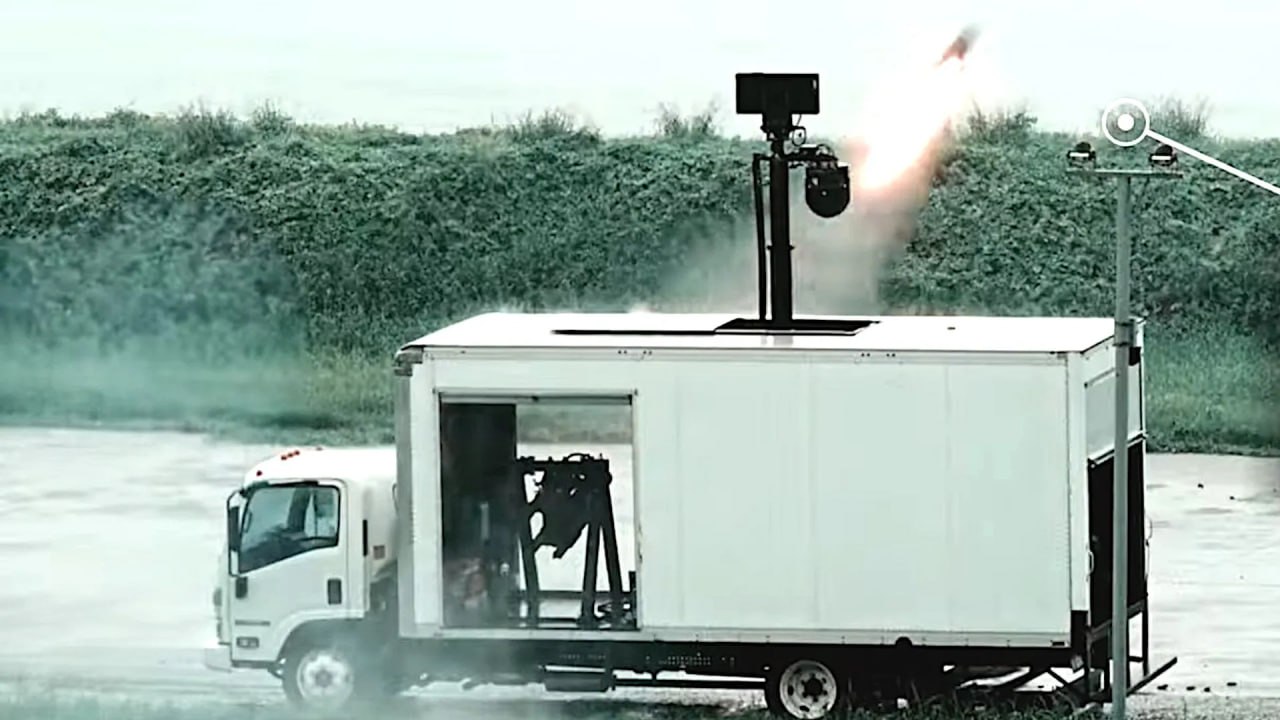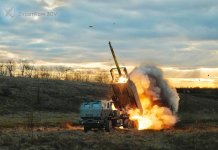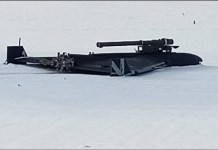Taiwan’s armed forces have been keenly watching the Ukraine War for the last three years to emulate tactics that could be used in the event of a potential Chinese invasion. In a latest development, the island state seems to have replicated Ukraine’s Brimstone missile strategy by mounting its Hellfire missiles on a truck.
Taiwan’s military has developed a launch system for AGM-114 Hellfire missiles inside civilian trucks. A video featuring the truck-mounted Hellfire launcher was published last week by the Military News Agency, the official news agency of Taiwan’s Ministry of National Defense (MND).
The Hellfire missile was created as an air-to-ground weapon for AH-64E Apache helicopters. However, attack helicopters are vulnerable to attack from the ground, including MANPADS (man-portable air defense system), as seen in the Ukraine conflict, where Russia lost a large number of attack helos. Thus, the modification of Hellfire for use from the ground would provide a significant advantage to Taiwanese forces.
The engineers combined the helicopter’s fire control and missile launch capabilities into a land-based platform to create a mobile system that offers covert deployment, rapid reaction, and flexible strike options.
This model appears to be similar to Ukraine’s launch of Brimstone missiles from the back of a truck, as first seen in footage in May 2022, just months after the Russian invasion.
The Brimstone truck launch system was developed by the United Kingdom for the Ukrainian forces, with the simple idea of mounting a Brimstone aircraft launcher rack onto a truck-mounted frame. Needless to say, it has been proven in combat and has been one of the best military innovations to come out of the Ukrainian battlefield.
Brimstone and Hellfire missiles are both air-to-ground, precision-guided munitions designed for engaging ground targets, particularly armored vehicles, with high accuracy.
Both missiles are primarily launched from aircraft–Hellfire launched from Apache choppers, and Brimstone launched from Typhoons, with some variants adapted for drones or ground platforms.
Furthermore, both missiles are fitted with warheads that are meant to penetrate contemporary armor, particularly reactive armor. For instance, Brimstone has a tandem HEAT warhead, and Hellfire has a shaped-charge HEAT warhead.
Brimstone differs from known Hellfire variants in that it has two millimeter-wave radar and laser guidance modes and can search targets independently. Nonetheless, Taiwan’s Hellfire innovation appears to be an attempt at replicating the Ukrainian strategy, which has undoubtedly become a textbook for modern warfare.
Faced with the threat of a looming Chinese invasion, Taiwan has drawn several key lessons from the ongoing Russia-Ukraine war, particularly regarding asymmetric warfare and the integration of emerging technologies against a larger adversary. Thishttps://twitter.com/Osint613/status/1957690577362850089 includes the adoption and mass-production of drones, the development of unmanned surface vessels (USVs), and investments in counter-UAV systems, among other things.
More importantly, though, the modification of Hellfire for launch from a civilian vehicle aligns with Taiwan’s ‘porcupine strategy’ that emphasizes unconventional and survivable systems to counter a militarily superior force.
How Will This Hellfire Launch System Help Taiwan
The system has been created by the 209th Arsenal of Taiwan’s Ministry of National Defense. Colonel Su of the 209th Arsenal told Taiwanese media that the weapon is designed for asymmetric warfare, particularly against armored threats during times of conflict.
The system features a twin-rail Hellfire launch rack inside a commercial van, with roll-up doors for firing and a retractable sensor mast that is equipped with radar, electro-optical, and infrared sensors for independent target acquisition. This design allows the launcher to blend into civilian environments, making it difficult to detect.
Colonel Su said in the video that significant changes to firing logic were necessary to convert the air-launched Hellfire to land operations. Colonel Su said that a primary technological challenge was to ensure that the missile could hit targets from varied terrain with accuracy. Thus, some adjustments were made to account for differences in elevation, line-of-sight, and targeting stability.
Colonel Su also admitted significant limitations with the new truck-mounted Hellfire launcher, at least in its current iteration. He said that considerable changes to the firing logic were necessary to convert the air-launched Hellfire to land operations, and adjustments were made in elevation, line-of-sight, and targeting stability.
Taiwanese officials state the truck-mounted launcher may offer a useful new way to use Hellfires, particularly if its AH-1W and AH-64E assault helicopters are subjected to significant air defense threats. Additionally, it would provide a mobile strike capability that may be especially helpful for strengthening shore defenses against an amphibious invasion that the Chinese People’s Liberation Army (PLA) forces have been diligently preparing for.

Notably, Chinese forces would have difficulty locating Hellfire launchers hidden within what appear to be civilian trucks. They could likely be mounted on any truck big enough could serve as a platform for launching missiles, a classic example of hybrid warfare. Moreover, truck-mounted Hellfires would allow Taiwan to field a large number of launchers, increasing survivability through dispersal.
Unlike fixed missile sites, trucks can be repositioned quickly to avoid detection and destruction, a tactic Ukraine has used effectively with mobile missile and artillery units to evade Russian strikes. This mobility is critical for Taiwan, given the threat of China’s overwhelming missile barrages and air superiority in a conflict.
Thus, this system would improve survivability by employing shoot-and-scoot strategies and would be in addition to several deception, camouflage, and concealment strategies already deployed or being worked on by the Taiwanese military, particularly in urban conflict.
The main strategy in the event of a Chinese invasion would be amphibious landings on Taiwan’s beaches.
During the vulnerable beachhead phase, landing craft, armored vehicles, or command posts could be targeted by Hellfire missiles, which have demonstrated anti-armor and accuracy capabilities. By using truck-mounted Hellfires, Taiwan indicates that it can deal a serious blow to an invading army, especially in the crucial early phases of an amphibious assault.
These truck-mounted Hellfires could be deployed in Taiwan’s rugged terrain or urban areas, where their precision reduces collateral damage.
Hellfire missiles are relatively inexpensive compared to larger missile systems like Patriot, which makes them ideal for Taiwan’s asymmetric strategy. If anything, Taiwan has learned from Ukraine’s success with low-cost drones and precision weapons against Russian armor that became a case study for the value of affordable, high-impact systems.
Additionally, these systems could be operated by Taiwan’s restructured reserve or garrison forces with basic training, aligning with the “All-Out Defense” system inspired by Ukraine’s Territorial Defense Forces.
- Contact the author at sakshi.tiwari9555 (at) gmail.com
- Follow EurAsian Times on Google News




